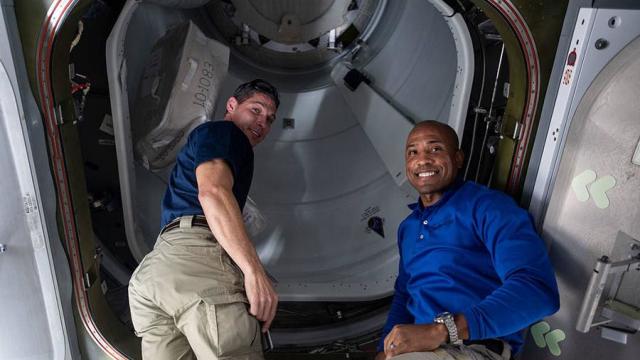During a spacewalk from the International Space Station (ISS), American astronauts Michael Hopkins and Victor Glover encountered problems when launching the Bartolomeo science platform on the Columbus module of the European Space Agency (ESA). The broadcast on Wednesday, January 27, is conducted by NASA on its website .
The astronauts left the American segment of the station from the Quest gateway at 06: 28 (14:28 Moscow Time).
Hopkins and Glover installed a Ka-band communication terminal with an antenna on the Columbus module, which will provide an independent broadband link between the Bartolomeo science platform and European ground stations. After that, the astronauts connected the power and data cables between the module and the platform for its launch. However, they failed to activate the equipment.
The Bartolomeo platform was exported to the ISS in March last year by the Cargo Dragon cargo ship. It is expected that the platform, equipped with 12 payload bays to accommodate commercial research equipment, will allow public and private organizations to conduct research in space quickly and with low economic costs.
On January 20, it was reported that the operation of the Russian Electron-VM oxygen production system was restored at the station.
Problems with it began against the background of an air leak on the ISS in October. The device failed three times that month. The system designer, chief designer NIICHIMMASH Alexey Kochetkov assured that the damage is not associated with marriage.
However, in early December, the system failed again. Then cosmonaut Ryzhikov reported that the shutdown occurred due to low pressure in the system and coincided with the shutdown of the vacuum cleaner, which was used for cleaning on the Russian segment of the Zvezda station. I couldn't turn on the Electron.
The life of the ISS is about to expire in 2024. The terms of work were originally planned to be extended until 2028 or 2030, but a decision has not yet been made.
In November, Roscosmos reported that in early 2021, it is planned to begin consultations with NASA and other partners on the future of the station.

